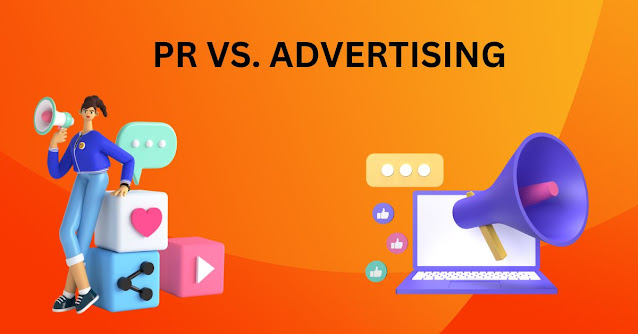In today's interconnected and media-driven world, businesses and individuals seek effective ways to communicate their messages to their intended audience. Public relations (PR) and advertising are two prominent disciplines that organizations employ to achieve their communication goals. While both PR and advertising aim to raise awareness and enhance brand perception, understanding the nuances and differences between these two fields is crucial for a successful communication strategy. Let's dive into the distinctive characteristics of PR and advertising to gain a deeper understanding of their roles in the business landscape.
PR and Advertising Defined:
Public Relations (PR) encompasses strategic communication efforts aimed at building and maintaining positive relationships between an organization and its stakeholders. PR focuses on managing reputation, fostering brand image, and engaging with the public through various channels such as media relations, events, and community outreach. On the other hand, advertising refers to the paid promotion of products, services, or ideas through different media platforms, with the goal of influencing consumer behavior and driving sales.
1. Communication Objective:
The primary objective of PR is to establish and maintain a favorable image of an organization or individual by cultivating positive relationships with the media, influencers, customers, and the public at large. PR activities often include media relations, press releases, crisis management, and reputation building. In contrast, advertising aims to create awareness, generate interest, and persuade target audiences to take specific actions through paid promotional messages. Advertising channels include print, television, radio, online platforms, and social media.
2. Control and Credibility:
One key distinction between PR and advertising lies in the level of control and credibility. PR relies on earned media coverage, meaning the organization or individual does not have direct control over the content or timing of media coverage. However, PR coverage often carries a higher level of credibility as it is seen as a third-party endorsement. In contrast, advertising offers more control over the message, placement, and timing. Advertisements are explicitly created by the organization and appear in designated advertising spaces.
3. Paid vs. Earned:
Advertising involves paid placements, where organizations pay for ad space or airtime. This allows for greater control over the content and placement of the message. In contrast, PR is predominantly earned through media coverage, where organizations strive to secure positive news stories, features, or interviews. PR success is measured by the quality and quantity of earned media coverage, which is more organic and perceived as unbiased.
4. Relationship-Building vs. Direct Promotion:
While both PR and advertising contribute to brand visibility, PR places a strong emphasis on relationship-building and long-term reputation management. PR professionals work to establish mutually beneficial relationships with the media, stakeholders, influencers, and the public, nurturing trust and credibility over time. Advertising, on the other hand, aims for direct promotion, delivering specific messages to target audiences to elicit immediate responses such as purchasing a product or visiting a website.
Conclusion:
In summary, PR and advertising are distinct disciplines that play vital roles in effective communication strategies. PR focuses on building relationships, managing reputation, and cultivating trust, while advertising revolves around direct promotion and controlled messaging. Understanding the differences between PR and advertising enables organizations to leverage the strengths of each discipline and develop a well-rounded communication

